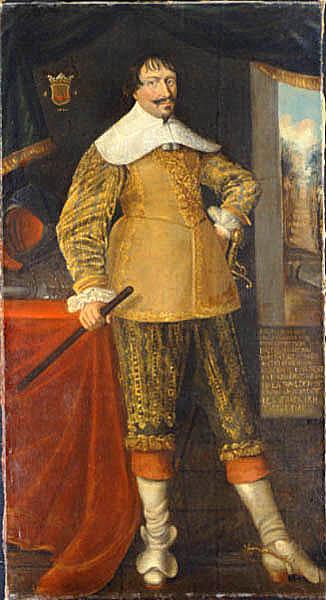
Here’s another chapter of my ongoing translation of Nils Mattsson Kiöping’s 1667 travelogue. I have introduced a paragraph division for legibility.
Chapter 33: Persia, the Shah’s hunts and Bengt Oxenstierna’s graffiti
For hunting he uses falcons, among which is a white raven with a red beak, which is as swift in striking birds as the falcons. He also has 200 leopards which have been trained so that no game in the fields or forests can pass them by without them catching it in three leaps. And if he does not catch the beast in three leaps, then he puts his tail between his legs, goes back and is ashamed.
Summing up, this King’s splendour, along with the activities in this city, of all kinds of crafts, of the number of people, is too hard for me to describe from fresh memory, and it would take a long time. Instead they who have Olearius’s diary about the Holsatian envoys’ journey to Persia can experience this city’s characteristics in detail.
Thus I want to move on briefly to the Kingdom of Persia itself, and name the towns that I have visited, and describe them in simple terms. Here in Issphahan and the suburb Julfa, where all Christians live, I found the late Lord Bengt Oxenstierna’s name in an Augustinian monastery inscribed with a nail on the wall in Latin. And it goes as follows in Swedish.
My GOD is a good companion to me
And virtue is in close company with me,
Thus I fear no danger,
I was not proud even in success;
But I go everywhere unafraid
Bengt Oxenstierna, a good Swedish Baron
In the year 1611,
Since our Saviour was born.
Adam Olearius (Ölschläger; 1599-1671) served as secretary to an ambassador from Frederick III, Duke of Holstein-Gottorp, to the Shah of Persia. Olearius published a book about his experiences in 1647 which appeared in English in 1662.
Bengt Bengtsson Oxenstierna (1591-1643, posthumously known as Travelling Bengt) was a Swedish royal councillor and diplomat who travelled extensively in continental Europe and the Near East. He was the first Swede to make a documented visit to Persia and served briefly at the court of Shah Abbas I. NMK’s reported year 1611 is however erroneous. Lord Bengt began his journey to Persia in 1616, so the inscription may have read 1617. NMK reports similar inscriptions in Shiraz and Baghdad, see ch. 41 and 48.
NMK’s Swedish version of the inscription is in rhymed couplets. If the original inscription was indeed in Latin, then NMK must have translated it rather freely. I have aimed to preserve the sense but not the rhymes.
I wonder if NMK really did see any inscriptions of Bengt’s or if the insistent references to him are attempts by NMK to borrow credibility for his book.
Para. 2, line 3, second last word ‘do’ should be ‘to’.
LikeLiked by 1 person
Leaving graffiti in sacred places goes back to Bronze Age Egypt and was still perfectly respectable in 19th century Italy. Its strange how the ideology has shifted in the last century, now graffiti is associated with the young (couples with their names in a heart …) and the poorly educated.
You might want to mention the connection to Axel Gustafsson Oxenstierna, who is better known outside of Sweden.
LikeLike